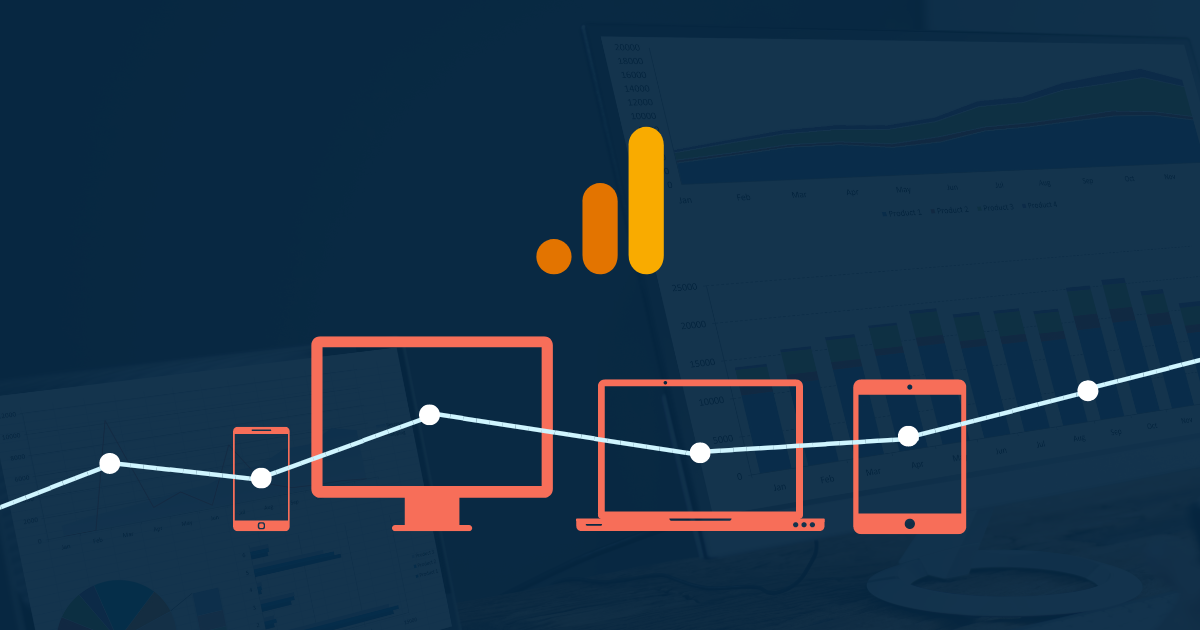There's a new sheriff in town and it goes by the name of Google Analytics 4 (GA4). Since 2005, we've all been well acquainted with Google's Universal Analytics and how it works. But in October of 2021, Google announced its most powerful version of the platform yet.
On July 1, 2023, Google Universal Analytics properties will stop processing new hits. The shift to GA4 is a significant change for Google Analytics users, and it’s essential to prepare for the switch now.
Differences Between Universal Analytics & Google Analytics 4

With previous platform updates, Google took care of all the back-end updates for you. Your data remained the same and the interfaces didn’t change. But, that’s not the case with GA4.
Google made some impactful changes with GA4 that may take time to get used to. The large differences include:
- The interface for navigation and setting up reports
- The data set itself (since Universal Analytics data and GA4 data are not compatible)
- No longer able to compare year-over-year (YoY) data
- Access to some metrics and functionality
In addition to those changes, GA4 will also focus on privacy settings, machine learning, and the ability to set more specific preferences.
GA4 Privacy Settings
Google describes GA4 as the new property designed for the future of measurement. This includes privacy control settings like “cookieless measurement”. That being said, all privacy features available in Universal Analytics (UA) are still available in GA4.
However, Google is well aware that in our day and age, privacy is becoming a top priority for most. GA4 enforces strict data retention policies. To put it simply, with UA you were able to choose how long data is kept (intervals ranging between 14 months and indefinitely). In GA4, you can choose to retain data for either two months or 14 months, then it is deleted monthly automatically.
Long story short, society is increasingly demanding more respect for their privacy, and Google Analytics 4 is a step in the right direction.
Machine Learning with GA4
We’ve all heard of “machine learning” and how cool it can be, but what does it have to do with Google Analytics? GA4 utilizes machine learning to track traffic across desktop traffic and app traffic, which wasn’t possible before.
When you use GA4, you’re able to see if a customer visits your app, then your website, or vice versa. This is a game changer. If someone views a product on your website, then switches to the app and purchases the item a few days later, you’re able to track that data. How? GA4 incorporates User IDs automatically across all reporting, analysis, and insights. Best part? It does not require a separate User ID reporting view to follow users on the site and the app.
Custom Preferences with GA4
In GA4, you’re able to track form submissions, video views, external link clicks, and other events easily. It’s no longer necessary to change code or other settings on your website or app. GA4 has a list of default events such as scroll behavior and transitions, plus the ability to set your own custom events. Events in GA4 are grouped into four categories:
- Recommended events like sign-up, login, and purchase
- Automatically-collected events like first visit, session start, and user engagement
- Enhanced measurement events like scrolls, file downloads, outbound clicks, and site searches
- Custom events
Since valuable data is defined differently across all business industries, GA4 makes it easier to specifically define your parameters compared to UA. However, having more flexibility to customize comes with more time, thought, and setup.
What Else is New with GA4?
Since GA4 is redefining how to track and measure website interactions, it’s crucial to be aware of the following key changes.

New Vocabulary to Learn
Some things have remained the same with the shift to GA4, but there are some important changes in terminology. For example:
- Behavior –> Engagement
- Segments –> Comparisons
- Channels –> User Acquisition
- Properties –> Streams
There are more changes in terminology, but it’s safe to say getting reacquainted with the navigation of GA4 may take some time.
Updated User Interface
Even though the vernacular is changing, the user interface in GA4 is a lot more user-friendly and intuitive than in previous versions. Compared to UA, GA4’s interface is simple and streamlined. However, like all new things, it will take time to get used to the new interface to use it effectively.
New Key Features
When you transfer over to GA4, you’ll have the opportunity to get familiar with new features like:
- More granular user data controls: Easily comply with global data regulations such as GDPR and CCPA.
- Customer lifecycle-framed reporting: Get a complete view of how customers are engaging with your organization across all devices and channels.
- Deeper audience integration with Google Ads: Build and maintain audience lists in greater depth in terms of remarketing and more.
- Insights and predictions powered by AI: Accurately pinpoint outcomes such as potential revenue from a specific segment of customers.
Data Model Changes
As we’ve mentioned, GA4 uses an event-based data model across its platform. This means that data, event names, and event tracking are collected and processed differently than in prior versions. This will likely impact the way you typically manage and analyze data.
How to Prepare for Google Analytics 4?
Now that we covered some of the basics, let’s talk about the most pressing items as you prepare your organization for Google Analytics 4.
Important Deadlines
Since being announced in March, Google made it clear that all support and tracking for UA will be dropped as of July 1, 2023. That means on July 2, 2023, no new data will be captured in your UA account.
According to Google, your organization’s historical data will be accessible for at least six months after the July 2023 retirement date, after which your data will be permanently deleted. While the summer of 2023 might seem far off, it’s smart to start checking a few boxes now.
Shifting from Universal Analytics to Google Analytics 4
Since the transition from UA to GA4 will be a little complicated, we put together a high-level list of how you can begin to prepare for the transition.
Step 1: Update tagging structure & reporting
Let’s start with the biggest beast to tackle: tagging structure. All of the existing tags on your site will need to be rebuilt to support the new platform since GA4 captures data differently. For each event that exists within your Google Tag Manager, you will need to build out an additional tag tied to the same trigger in order to send the data to GA4. If you have an eCommerce site, you’ll need to re-construct dataLayers on your site or use Google Tag Manager’s custom JavaScript variables to reformat the data for GA4.
Since GA4 will be able to track traffic across desktops and apps, that means the fields captured in reporting are more customizable. However, the fields captured in UA are not optimized for GA4, so you’ll need to rebuild data flows using GA4 data. The good news is Google has a list of similarities between UA and GA4 data that will help with the transition!
Step 2: Get familiar with the platform
As we’ve mentioned, there are a lot of new functions, names, and overall looks to GA4 compared to UA. The transition is unlike anything we’ve seen so far from the Google world, so preparing yourself and your teams is a crucial step.
There is no shortage of articles, guides, and videos to educate yourself on GA4. Start having meetings with your team members that are involved with SEO, reporting, and marketing to discuss GA4 as you prepare for the transition. Then start assigning tasks for the merge as you progress towards the transition so as to not overwhelm anyone on the team. If a marketing agency is involved with your Analytics properties and reporting, looping them into the process is a must.
The best way to prepare for GA4 is to get in there and have a look around. Remember, Universal Analytics will be around till July 1, 2023, so you have time to add GA4 tags to your website and work alongside your UA tags to understand the specifics of the changes. There is no cross-over between UA and GA4, so there is no concern of one impacting the other.
Step 3: Learn about the benefits of GA4
Even though there’s a lot that goes into transitioning to GA4, the payoff will be an improvement compared to UA. Google’s “Advanced Measurement” configuration integrates page view, scroll, outbound click, site search, video engagement, and file download tracking into the platform by default.
In addition to that, GA4 adheres to personal data laws like GDPR and CCPA which will help users navigate the new cookie-less digital world and comply with industry best practices.
Trust us, the jump from Universal Analytics to Google Analytics 4 is a challenging but necessary task. We provided an overview of GA4 and the impact it has, but there’s no shame in being overwhelmed with all the changes. A great way to get started is to consider your organization’s strategy and how that dictates your GA4 configuration. Firefli can support your organization by upgrading your website to Google Analytics 4. Let us help you prepare for the transition!

